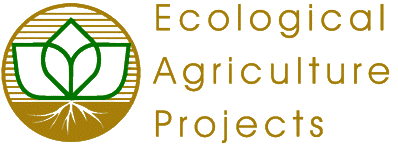

EAP Publications | Virtual Library | Magazine Rack | Search | What's new
Join the Ecological Solutions Roundtable
The economics of the transition to organic practices for a Québec dairy farm have been investigated by Forest (1992). A medium term (six year) transition was analysed using a whole farm multi-period linear programming model with the primary concern being the optimal choice of a crop rotational plan among ten potential rotations, under two crop yield assumptions. Dabbert (1986) conducted a similar study for a Pennsylvania farm.
The analysis was based on a representative farm located near Montreal, Québec, The farm consists of 50 hectares of drained land, and is milking 41 cows, with average production of 7566 litres/year. The traditonal rotation prior to conversion was three years of hay followed by two years of corn silage and one year of barley. All analysis was based on 1989 data.
Ten, six year organic crop rotations were developed with the assistance of agrologists with experience in organic agriculture. The rotations competed with each other in the process of being selected as optimal, subject to constraints, and the assumption that only one third of the farm was converted to chemical free production each year. The farm was constrained to be self-sufficient in livestock feed from year three onward, since the market for organic feed is still poorly developed.
In the base model (model A), yields were assumed to be equivalent to ten year average conventional yields. In a second model (model B), a 30 percent decrease in yields during the first year of the transition was assumed, followed by a linear recovery over three years. Similar assumptions were used by Dabbert (1986).
For the purposes of this model, it was assumed that some crops could be marketed, while other crops had to be consumed on the farm. This provided an implicit limit on the export of soil minerals, since explicit nutrient balances were not included. Since there is no established market in Quebec for transitional products, conventional output prices were used, and thus, all results do not depend on the existence of price premiums.
The general evolution of profit for both models was a decrease followed by a recovery as the herd size adjusted to the constraints imposed. The improved profitability as transition progressed could be traced to lower expenses for external feed, additional revenue from the sale of soybeans, and revenues generated from the reduction in the size of the dairy herd. In model A, forcing the farm to be self-sufficient in feed caused the dairy herd to shrink by about 15%.
Although there were differences between models, both resulted in optimal rotations that were judged to be economically viable throughout the transition. After allowing for a standard rate of return to capital investment, at worst a $36,092 surplus was available for family living expenses. The effect on profit during the first year of the transition was minimal, since only one third of the farm was converted. However, a faster conversion, similar to Dabbert, would likely have had a more serious impact on profit.
The results support the view that a conversion to organic agriculture need only have a modest negative effect on farm profit if the transition is done gradually, and with the presence of livestock such as dairy cattle. The presence of livestock is an important factor since it allows the farm to grow crops that are essential in an organic rotation and have no or low market value (i.e. hay).
The results from this model are encouraging; however they should not be interpreted as definitive. Nevertheless, it represents a first step in the development of a flexible management tool that will be more fully developed in the future.
Copyright © 1992 Forest, J.F.. Reprinted with permission. All rights reserved.
Info Request | Services | Become EAP Member | Site Map
Give us your comments about the EAP site
Ecological Agriculture Projects, McGill University (Macdonald
Campus)
Ste-Anne-de-Bellevue, QC, H9X 3V9 Canada
Telephone:
(514)-398-7771
Fax:
(514)-398-7621
Email: eapinfo@macdonald.mcgill.ca
To report problems or otherwise comment on the structure of this site, send mail to the Webmaster